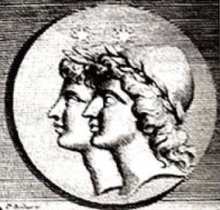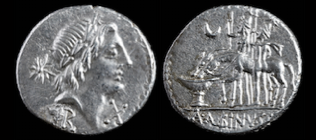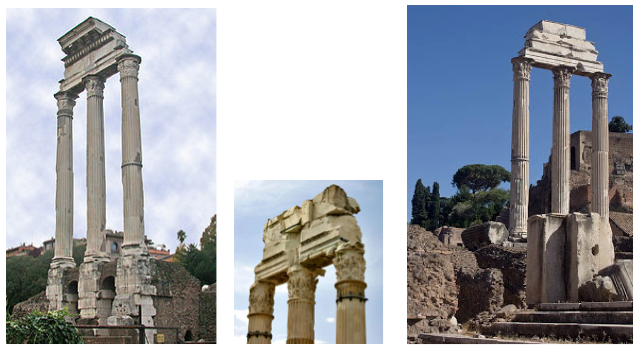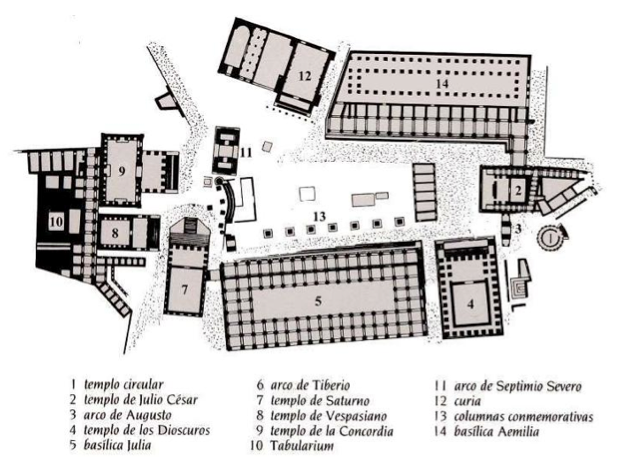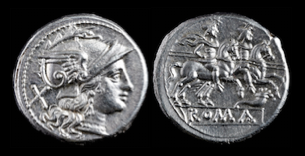The Dioscuri
In Greek mythology the Dioscuri (Διόσχουροι) were two famous heroes, twins and twins also of Helen of Troy and Clytemnestra, wife of Agamemnon and Queen of Mycenae. Were called Castor and Pollux (Gemini) and had their own temple in the Roman Forum.
The best known of his filiation is that Zeus turned into a swan and so seduced Leda, daughter of King Thestius of Aetolia, who was married to Tyndareus, king of Sparta. The night that Zeus joined Leda, woman also joined her husband and two sets of twins were conceived: first, Castor and Clytemnestra, children of Tyndareus and other, of two separate eggs, Pollux and Helen, sons of Zeus.
Among the Dioscuri, being Pollux son of Zeus, was considered the only twin that was immortal.
Castor was famous for his ability to tame horses and ride them, while Pollux was it for his skill in fighting.
Meanwhile, Aphareus, brother of Tyndareus and in turn King of Messinia, also had two twins: Idas and Lynceus. The first was stronger, but Lynceus had such sharp eyes that could see in the dark.
The rivalry between the two sets of twins started when Castor and Pollux abducted Phoebe and Hilaria, daughters of their other uncle Leucippus and committed with Idas and Lynceus. Thereafter, the confrontation between them was constant.
However, after the death of Aphareus made peace: one day, the four decided to put aside their differences and join forces to organize a cattle rustling in Arcadia. The assault was successful and randomly chose Idas to divide the spoils. This butchered a cow and divided it into four pieces, proposing that half the loot out for that first ate his part and the rest for which wound up in second place. Without giving almost time for others to start, Idas engulfed his part and then helped Lynceus to swallow his. Thus, both carried the cattle to Messinia.
The Dioscuri remained there until Pollux, the slowest of the four, finished eating and then went to Messinia to protest traps used. By not being there Idas and Lynceus, the Dioscuri were made with cattle and hid in an oak hollow awaiting the return of their rivals. But Lynceus had seen them from the top of the mountain and Idas, barreling down the hillside, threw his spear against the tree and turned to Castor. When Pollux rushed to avenge his brother, Idas threw a stone, wounding him seriously, but still Pollux managed to kill Lynceus with his spear. In the same dispute, Zeus intervened in defense of his son Pollux and killed Idas with a thunderbolt.
Shaken by grief at the loss of Castor, Pollux refused to accept immortality without his inseparable brother, whereupon Zeus allowed both will alternate six months as gods on Olympus and six as deceased mortals in Hades.
Temple in the Roman Forum
It is said that during the Battle of Lake Regilo (496 BC), two youths were seen fighting alongside the Romans. The afternoon of victory were also seen in Rome watering their horses in the Juturna source where announced the city the victory achieved on Latins to disappear soon after.
These youth identified as the Dioscuri, the dictator Aulus Postumius Albinus vowed to devote to them a temple in the forum. The temple was located at the site of the apparition and they was dedicated in 484 BC. Since that moment, Castor and Pollux, owned a sanctuary and their own festivals and rites, and established themselves as protectors of the army and, more specifically, of the cavalry in combat. Along with this military nature, the Dioscuri were progressively assuming other civil character traits: many data show how well protected boaters and sailors to the danger of a storm. Because in Italy most of the foreign trade was done by sea patronage on marine was extended to traders.
This could explain how often are depicted on coins.
The temple of the Dioscuri had porches of Corinthian columns around the outer perimeter at the rate of eight columns in front and eleven on the long sides. It was rebuilt in 117 BC by the consul Lucius Caecilius Metellus Diadematus and later, after a fire, by Augustus (14 BC). At present only three of its columns are preserved.
Although dedicated to the Dioscuri, was more popularly known as Temple of Castor. It was repeatedly meeting place of the Senate and from the mid-second century BC, the podium became a forum for judges and speakers during the comitia that took place in this part of the square of the Forum.
Devotion enjoyed by Castor and Pollux in the military responds to the character who is traditionally attributed to the Roman cavalry guards. Since the inclusion of the Dioscuri in the Roman Pantheon, Mars, god of war par excellence, remained as the god of infantry, while Castor and Pollux became protective deities of cavalry.
Coinage
In numismatics are depicted on many Roman coins, especially in the first anonymous series and in emissions of families (gens) during the early days of the Republic.
They usually appear as Janiform head on anvers and on revers with their horses, usually riding with hat and coat, holding the bridles with one hand and their spears with the other.
The horses of the Dioscuri were called Flogeus and Harpagus and said they were from the union of the Harpies and wind-god Zephyrus.
